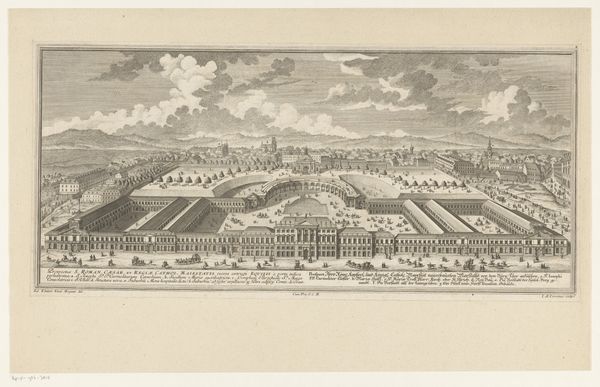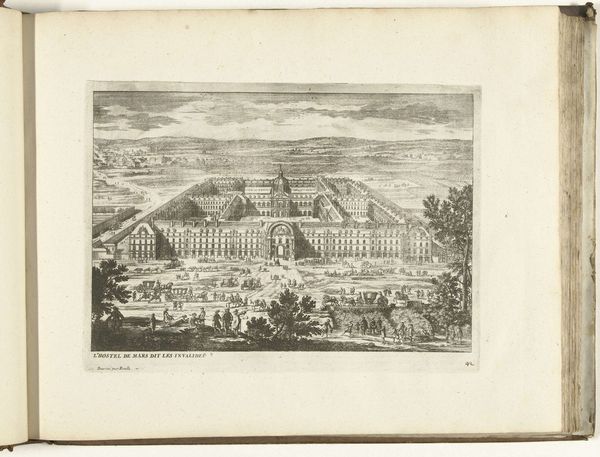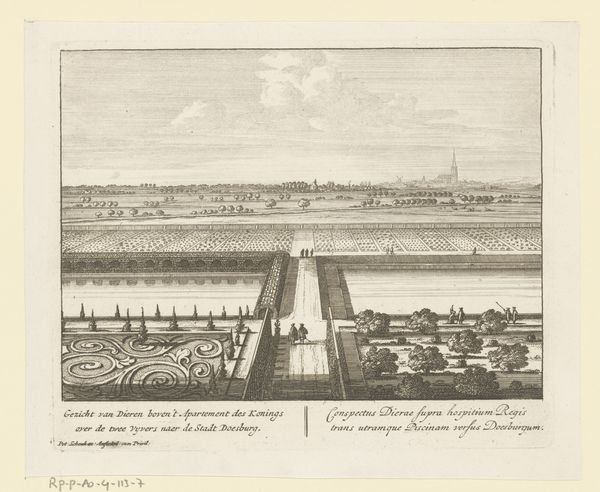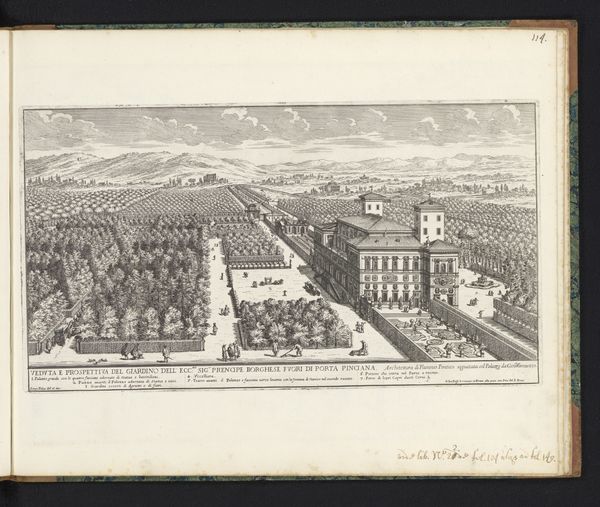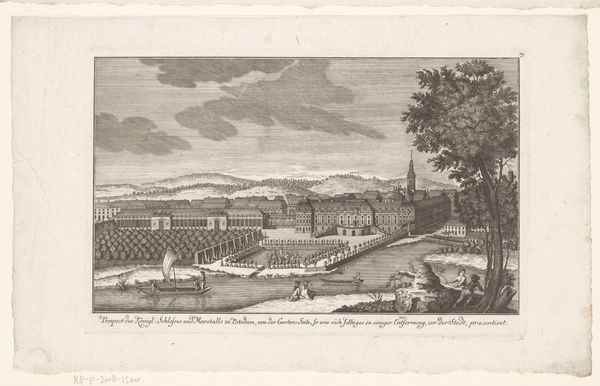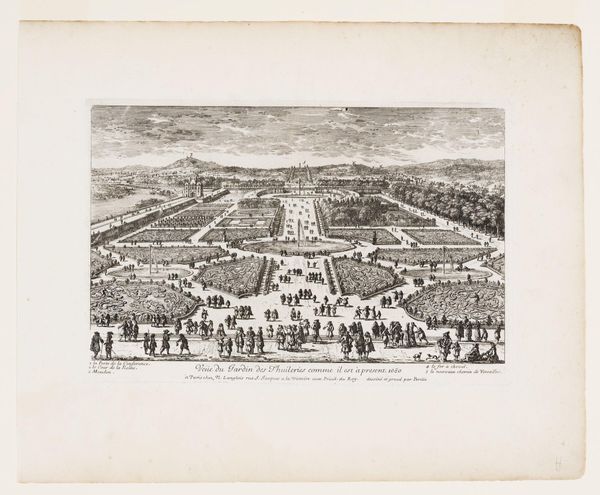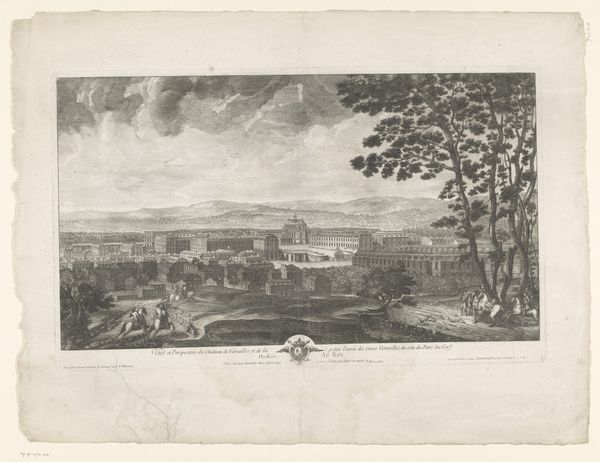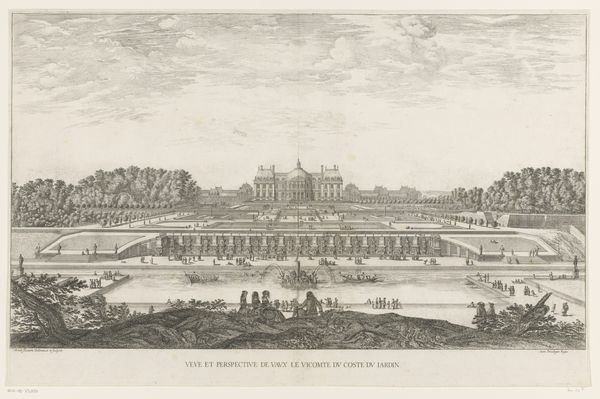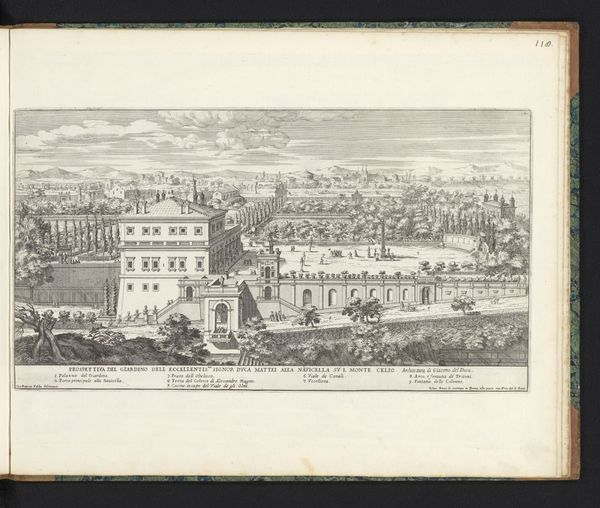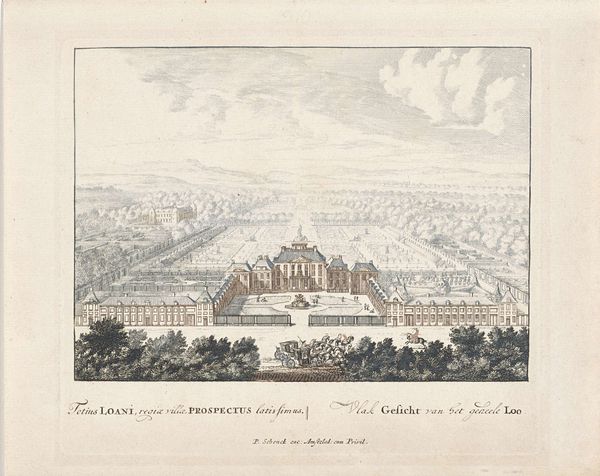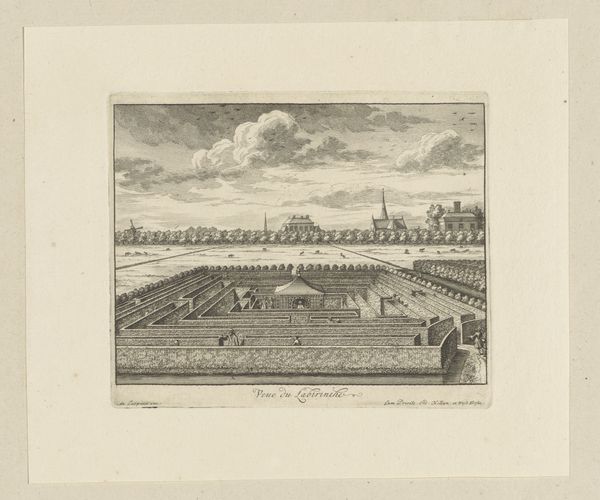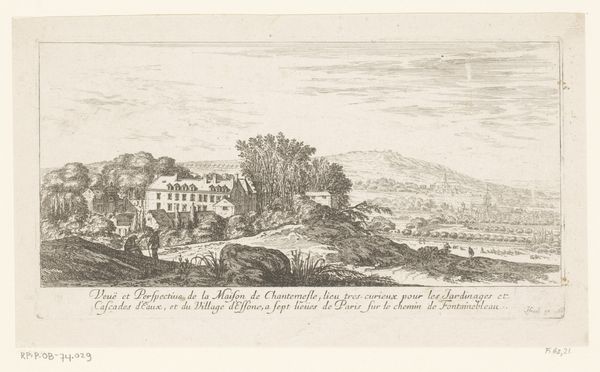
print, engraving
#
baroque
# print
#
landscape
#
perspective
#
line
#
cityscape
#
engraving
Dimensions: height 144 mm, width 170 mm
Copyright: Rijks Museum: Open Domain
Curator: Welcome. Before us hangs a striking view of Paleis het Loo, rendered in a print by Jan van Call around 1700. Editor: It has a rather stern feel, doesn't it? That aerial perspective and intricate line work really emphasize the formality of the architecture and the garden layout. Curator: Indeed. The precise engraving highlights the carefully planned structure. Notice how the composition directs our eye along those strict axial lines leading back into a vanishing point set in a deep field? Editor: I can certainly see what you mean by how we are 'directed', and note how powerful royal palaces appear time and time again in European iconography to reinforce absolute authority with geometrical planning and vastness that dominates nature! Do we have more of a feeling for the story around why it was engraved, or how it has been interpreted? Curator: Well, the line engraving is, I feel, a vehicle in service of this meticulous Baroque ideal, the intent behind these carefully incised marks is perhaps, primarily, clarity of form. Every element, every edge, seems intended to underscore the imposing architecture, and controlled landscaping on display. Editor: True but even more! This visual order must also represent something important about human ambition and the imposition of absolute authority! Beyond being 'just' a palace this carries within it a claim on identity. Palaces like these communicate messages about wealth, lineage, power. It would have a significant impact as the 'Gezicht' or visage that the populace had of their rulers, as intended I am certain. Curator: An intriguing suggestion! This visual perspective certainly seems to mirror royal privilege and their elevated vantage. The linear elements really guide one’s vision across the vast layout. Editor: Jan van Call, by portraying Paleis het Loo in this detailed form, provides a glimpse into the heart of 17th-century Dutch power and, more subtly perhaps, into the semiotics of sovereign representation. Curator: Perhaps this precise mode of depiction, typical for topographical prints of the period, might also symbolize scientific method itself – observation, measurement and meticulous documentation. I appreciate its sharp, measured technique now that we have studied it closely together. Editor: Yes. Contemplating it together allows a rich story to be unlocked from the lines and perspective on view. Thank you for joining me.
Comments
No comments
Be the first to comment and join the conversation on the ultimate creative platform.
